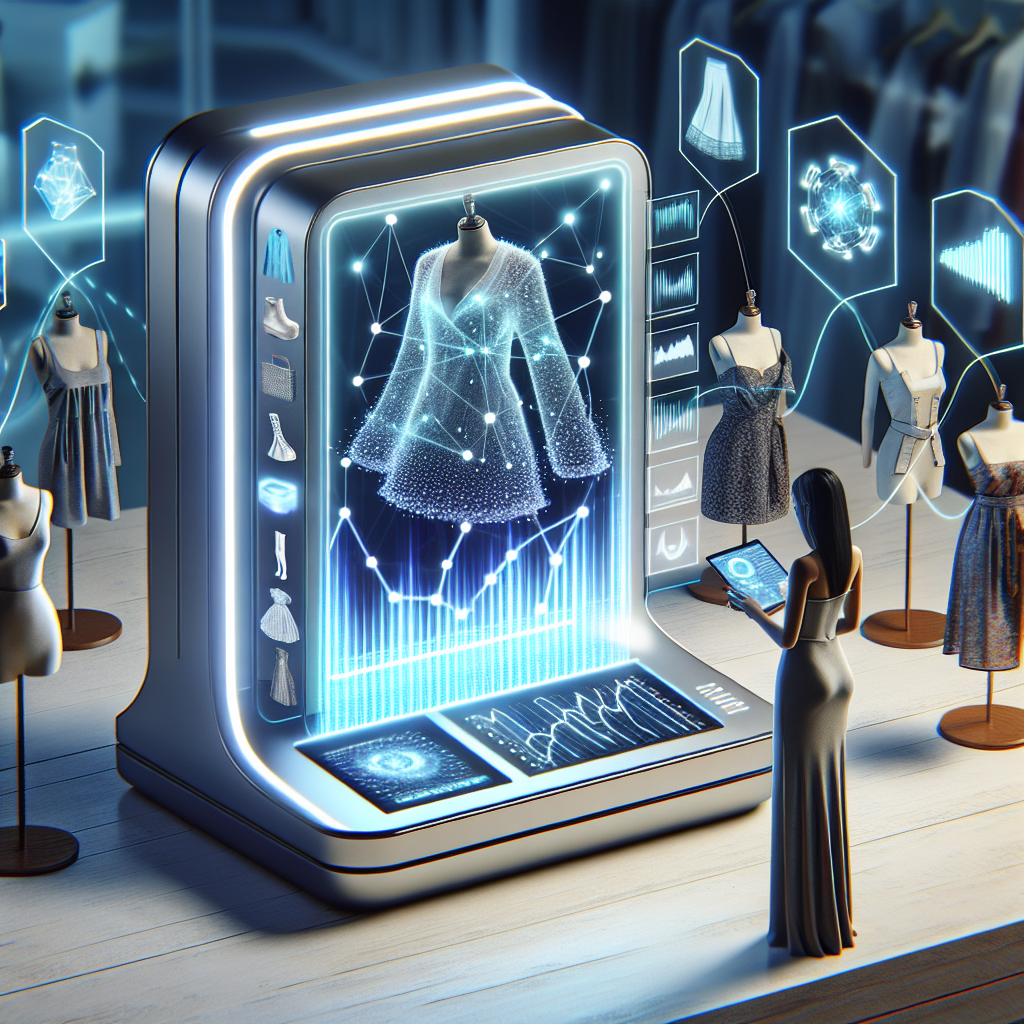Fashion forecasting and trend analysis have long been essential tools for the fashion industry to stay ahead of the game and meet consumer demands. Traditionally, these tasks were carried out by human experts who would use their knowledge and experience to predict upcoming trends. However, with the advancements in technology, particularly in the field of artificial intelligence (AI), the fashion industry has seen a significant shift in how forecasting and trend analysis are being done.
AI has revolutionized the way fashion forecasting and trend analysis are conducted by providing more accurate and timely predictions. By analyzing vast amounts of data from various sources, AI can identify patterns and trends that may not be immediately obvious to human analysts. This allows fashion brands to better understand consumer preferences and behavior, leading to more informed decisions about product development, marketing strategies, and inventory management.
One of the key benefits of AI in fashion forecasting and trend analysis is its ability to process large amounts of data quickly and efficiently. This means that fashion brands can gather insights from a wide range of sources, including social media, e-commerce platforms, and even weather patterns, to make more informed decisions about upcoming trends. AI algorithms can analyze this data in real-time, allowing brands to react quickly to changing market conditions and consumer preferences.
Another advantage of AI in fashion forecasting is its ability to predict trends with a high degree of accuracy. By analyzing historical data and identifying patterns, AI algorithms can forecast upcoming trends with a level of precision that is difficult to achieve through traditional methods. This can help fashion brands to anticipate consumer demand, optimize their product offerings, and stay ahead of the competition.
AI can also help fashion brands to personalize their offerings to individual consumers. By analyzing data on consumer preferences, shopping habits, and social media activity, AI algorithms can create personalized recommendations for products that are likely to appeal to each customer. This can help brands to increase customer loyalty and drive sales by offering a more tailored shopping experience.
In addition to forecasting trends, AI can also play a role in trend analysis by identifying emerging trends and predicting their potential impact on the market. By analyzing data on social media trends, celebrity endorsements, and other factors, AI algorithms can identify trends that are likely to gain traction in the future. This can help fashion brands to stay ahead of the curve and capitalize on new opportunities in the market.
One of the key challenges of using AI in fashion forecasting and trend analysis is the need for high-quality data. AI algorithms rely on large amounts of data to make accurate predictions, so fashion brands need to ensure that they have access to reliable and relevant data sources. This may require investing in data collection and analysis tools, as well as working with external partners to gather data from a variety of sources.
Another challenge is the potential for bias in AI algorithms. Like any technology, AI is only as good as the data it is trained on, so there is a risk that algorithms may inadvertently perpetuate biases in the data. To mitigate this risk, fashion brands need to carefully monitor and evaluate the performance of their AI systems, and take steps to address any biases that may arise.
Despite these challenges, the role of AI in fashion forecasting and trend analysis is likely to continue to grow in the coming years. As technology advances and more data becomes available, AI algorithms will become even more sophisticated and accurate in predicting trends. This will enable fashion brands to make more informed decisions about their product offerings, marketing strategies, and overall business operations.
FAQs:
Q: How does AI in fashion forecasting differ from traditional methods?
A: AI in fashion forecasting relies on algorithms to analyze large amounts of data and identify patterns and trends that may not be immediately obvious to human analysts. This allows for more accurate and timely predictions compared to traditional methods, which rely on human expertise and experience.
Q: Can AI predict fashion trends with 100% accuracy?
A: While AI algorithms can make predictions with a high degree of accuracy, it is unlikely that they can predict fashion trends with 100% certainty. Fashion trends are influenced by a wide range of factors, including cultural shifts, economic conditions, and personal preferences, making it difficult to predict with absolute certainty.
Q: How can fashion brands use AI to personalize their offerings?
A: Fashion brands can use AI to analyze data on consumer preferences, shopping habits, and social media activity to create personalized recommendations for products that are likely to appeal to each customer. This can help brands to increase customer loyalty and drive sales by offering a more tailored shopping experience.
Q: What are the key challenges of using AI in fashion forecasting?
A: Some of the key challenges of using AI in fashion forecasting include the need for high-quality data, the potential for bias in AI algorithms, and the need to monitor and evaluate the performance of AI systems. Fashion brands need to invest in data collection and analysis tools, as well as work with external partners to gather relevant data sources.
Q: How can fashion brands address bias in AI algorithms?
A: To address bias in AI algorithms, fashion brands need to carefully monitor and evaluate the performance of their AI systems, and take steps to address any biases that may arise. This may include diversifying the data sources used to train the algorithms, as well as implementing checks and balances to ensure that the algorithms are making fair and accurate predictions.

